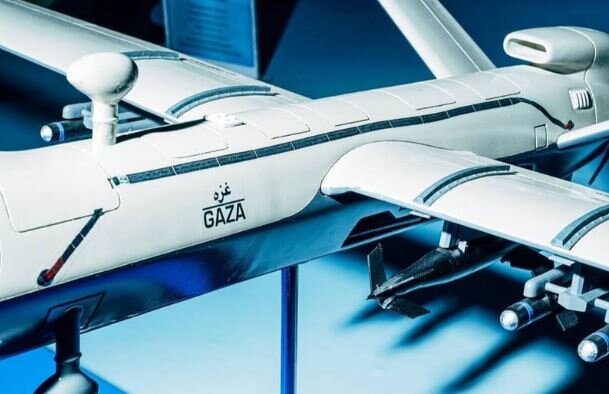Tehran – Iran’s Islamic Revolutionary Guard Corps (IRGC) aerospace forces have enhanced the capabilities of Gaza Wide Body combat drones by integrating sophisticated anti-jamming and anti-spoofing technologies into the system.
This upgrade is designed to protect your drones from electronic tactics aimed at disrupting navigation and control.
This development was indirectly emphasized by Iran’s recent participation at the Lado (Latin American Aerospace and Defense) 2025 exhibition held in Rio de Janeiro, Brazil from April 1st to 4th. This year marked the first attendance of the Iranian Ministry of Defense at this important exhibition.
Within the exhibition space, Iran has notably displayed a model of the domestically produced Shahed-149, also known as Gaza, a wide-body military drone of considerable importance.
A thorough inspection of images related to the drone reveals it is equipped with a newly developed antenna and advanced navigation receiver. These components are specially designed to prevent or effectively minimize the potentially harmful effects of radio frequency interference, a common tactic used in electronic warfare scenarios. It is noteworthy that similar anti-jamming and spoofing measurements have previously demonstrated effectiveness when implemented with Shahed-129 drones.
Often recognized as Iran’s biggest combat drone, the Shahed-149 was first introduced to the public in May 2021. Propelled by a turboprop engine, this military unmanned aerial vehicle (UAV) has the ability to carry up to 13 bombs, enhancing its offensive cap.
In terms of its physical dimensions, the Gaza drone boasts a wingspan of 21 meters and weighs a total of 3.1 tons. It can carry payloads weighing up to 500 kilograms.
Regarding its operational characteristics, the drone can be in the air for 35 hours. It has a service cap of 35,000 feet, indicating a maximum altitude that can operate effectively and an operating range of 2,000 kilometers, allowing it to cover a considerable distance during missions.
The Shahed-149 drone is versatile in its applications and is suitable for deployment into a wide range of combat scenarios, surveillance operations, and reconnaissance missions. Additionally, it can be used effectively in search and rescue and rescue efforts to provide essential relief efforts in the aftermath of natural disasters and other unexpected accidents.

